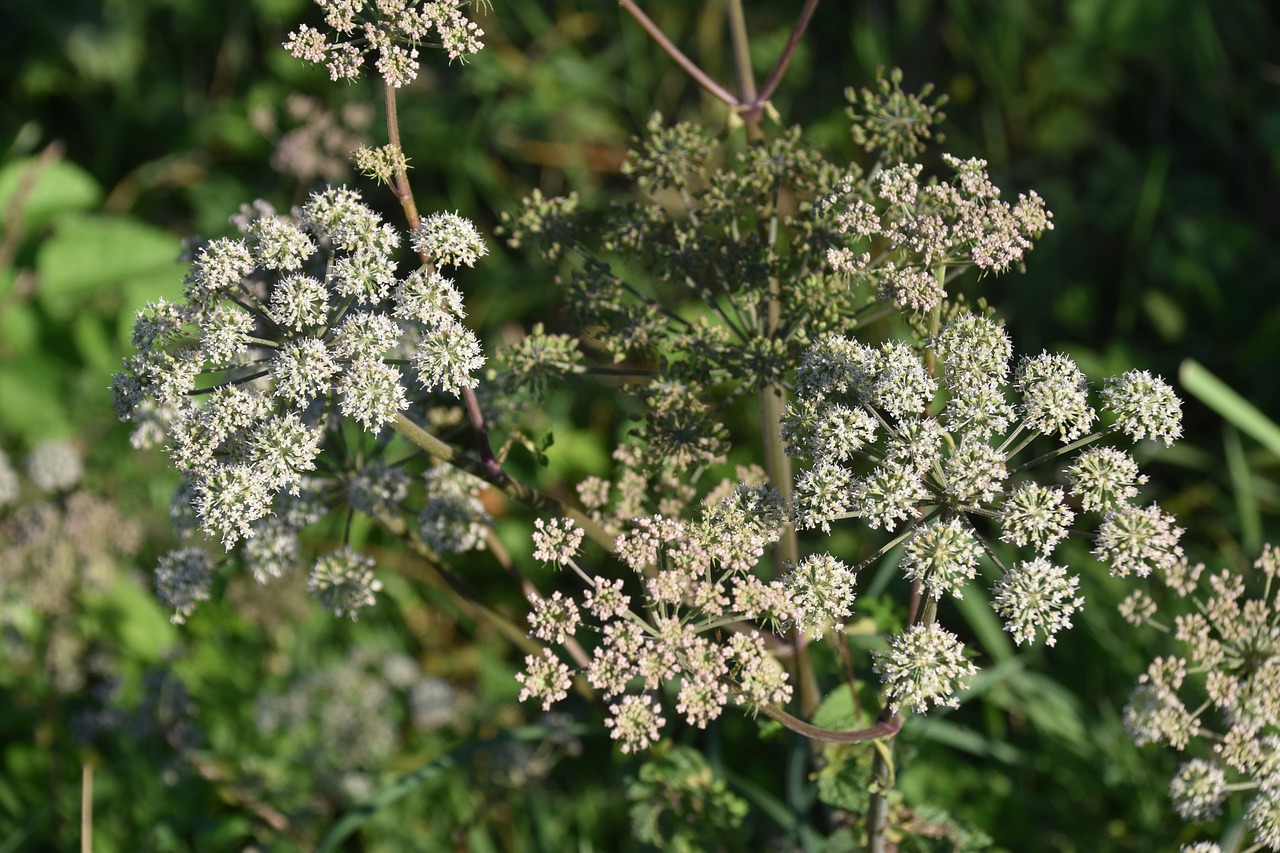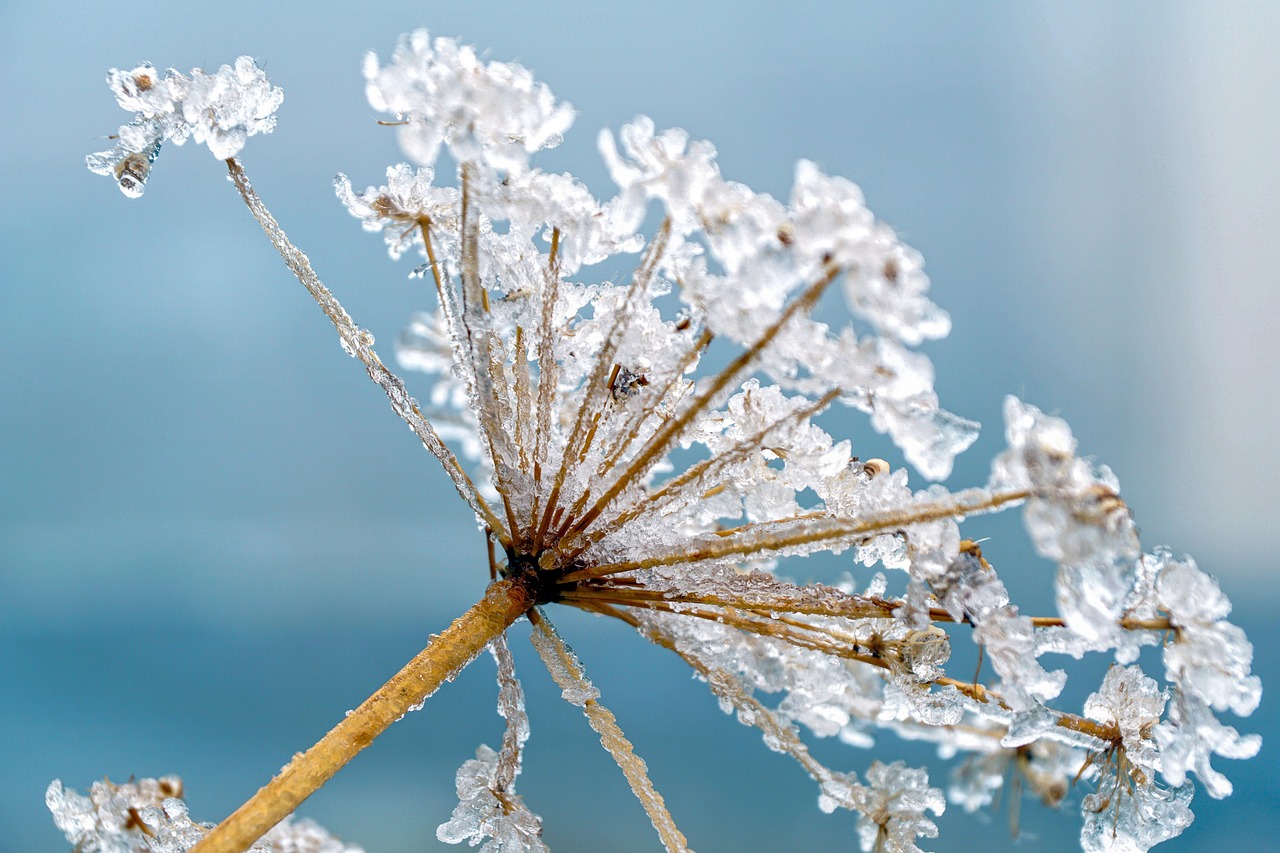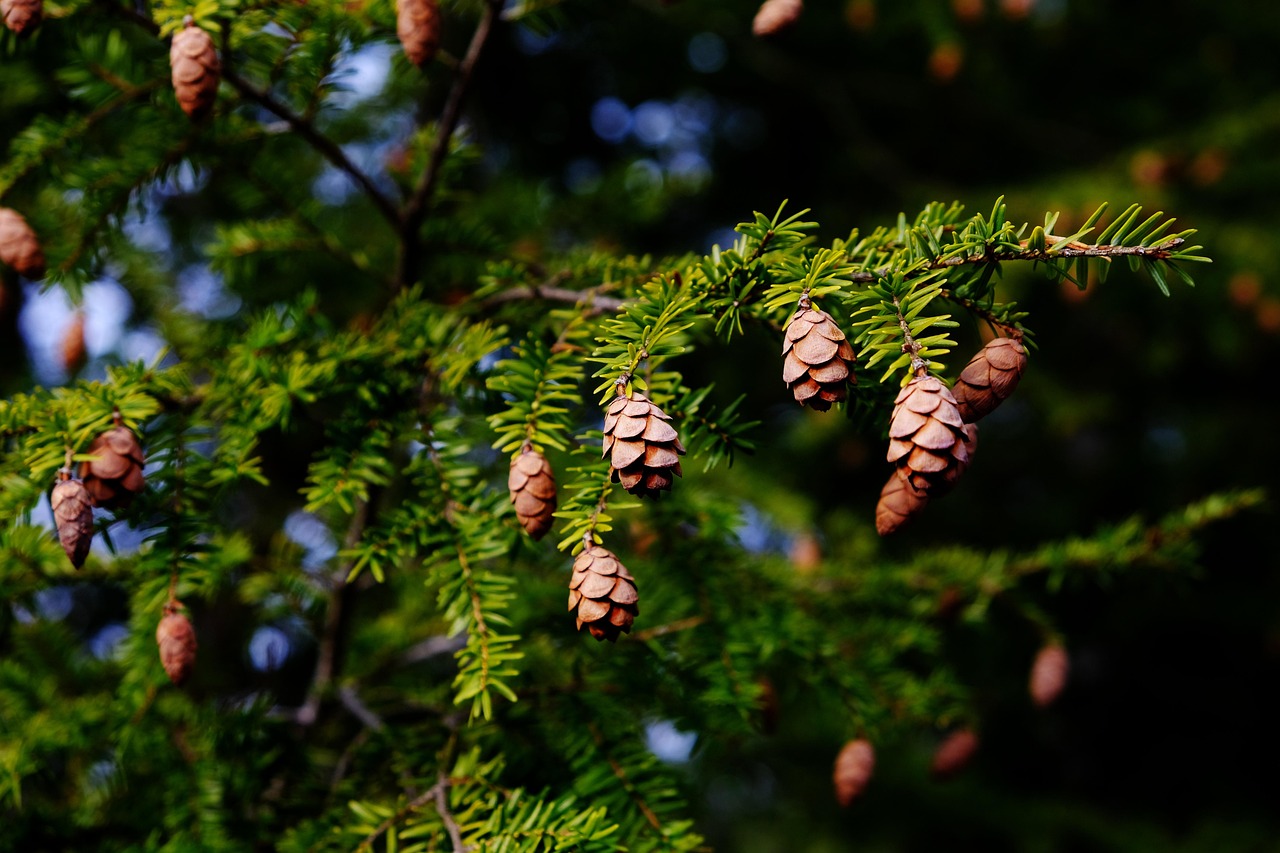The hemlock plant is highly poisonous, containing toxic alkaloids such as coniine and gamma-coniceine. Ingesting any part of the plant can lead to severe health issues, including respiratory failure and death. Its toxic nature has been historically significant, famously associated with the death of Socrates.
Understanding Hemlock: A Brief Overview

Hemlock refers to several plant species belonging to the genus Conium, with the most notorious being Conium maculatum, commonly known as poison hemlock. This perennial herb is native to Europe and North Africa but has spread to various regions worldwide, including North America. Hemlock thrives in moist, shaded environments and can often be found near roadsides, in fields, and along riverbanks.
The plant is characterized by its tall stature, feathery leaves, and small white flowers that cluster in umbrella-shaped formations. Although it may resemble other harmless plants such as wild carrot or fennel, hemlock’s toxicity distinguishes it from these benign species. Understanding the appearance and habitat of hemlock is crucial for identifying and avoiding it.
Key Toxic Components of Hemlock
The primary toxic components of hemlock are alkaloids, which have potent effects on the nervous system. The two main alkaloids are:
- Coniine: This alkaloid acts as a neuromuscular blocker. It disrupts the communication between nerves and muscles, leading to paralysis.
- Gamma-coniceine: Similar to coniine, it has a toxic effect on the nervous system but is less studied.
Both compounds can result in severe poisoning symptoms if ingested or improperly handled. The toxicity is particularly concerning because the plant can be mistaken for edible varieties, leading to accidental poisoning.
Toxicity Symptoms and Effects
Hemlock poisoning can occur through ingestion or even skin contact in some cases. The symptoms typically manifest within hours of exposure and can progress rapidly. Common symptoms include:
- Nausea and vomiting
- Abdominal pain
- Muscle weakness
- Respiratory distress
- Convulsions
- Coma
If untreated, severe poisoning can lead to respiratory failure and death due to paralysis of the respiratory muscles. Immediate medical attention is crucial for anyone suspected of hemlock poisoning.
Historical Context of Hemlock Poisoning
The historical significance of hemlock is profound, particularly in ancient Greece. The most famous case involves the philosopher Socrates, who was sentenced to death by consuming a potion made from hemlock. This event has left a lasting impact on philosophy and ethics, often used as a reference point in discussions about justice and morality.
Throughout history, hemlock has been used as a method of execution and as a means of assassination due to its potent effects. However, its notoriety extends beyond human interactions; animals, especially livestock, are also susceptible to its toxic effects when they graze on contaminated pastures.
Precautions and Safe Handling
Given the dangers associated with hemlock, individuals should take precautions when in areas where the plant may grow. Some recommended safety measures include:
- Avoiding contact with unknown plants.
- Educating yourself about local flora.
- Carrying a field guide for plant identification.
- Wearing gloves if handling plants that may resemble hemlock.
Proper awareness and education can prevent accidental poisoning and promote safety in natural environments where this toxic plant may be present.
Identifying Hemlock in the Wild
Recognizing hemlock in its natural environment is vital for prevention of accidental poisonings. The plant has several distinct characteristics that can help differentiate it from similar-looking species. Understanding these features can aid both casual hikers and nature enthusiasts in avoiding contact with this dangerous plant.
Physical Characteristics of Hemlock
Hemlock plants can grow up to 10 feet tall and have a few identifiable traits:
- Leaves: The leaves of hemlock are finely divided, resembling those of parsley or carrot. They are bright green and have a smooth texture.
- Flowers: Hemlock produces small white flowers that grow in clusters, resembling an umbrella shape. These clusters can be misleading, as other non-toxic plants may have similar flowers.
- Stems: The stems are hollow, smooth, and often marked with purple blotches or spots. This feature is crucial for identification.
- Roots: The roots emit a strong, unpleasant odor when crushed, which can serve as an additional warning sign.
Familiarizing oneself with these characteristics can significantly reduce the risk of encountering hemlock in the wild.
Common Misidentifications

Many people mistakenly identify hemlock for other plants that are not toxic. Some common misidentifications include:
- Wild Carrot (Daucus carota): Often called Queen Anne’s Lace, wild carrot has a similar flower structure but features hairy stems and a different leaf shape.
- Fennel (Foeniculum vulgare): Fennel has a sweet aroma and thick, green stems. It is often cultivated for culinary uses, making it more familiar to the public.
- Yarrow (Achillea millefolium): Yarrow has feathery leaves similar to hemlock but typically has a more compact flower cluster and is not toxic.
Being aware of these look-alikes is essential for safe exploration in areas where hemlock grows.
Impact of Hemlock on Ecosystems
The presence of hemlock in ecosystems has complex implications. While it is detrimental to human health, its role within the ecosystem can be multifaceted.
Effects on Wildlife
Hemlock poses risks not only to humans but also to wildlife. Livestock and other grazing animals may consume the plant inadvertently. The effects on wildlife include:
- Toxicity leading to illness or death in animals that ingest the plant.
- Altered feeding behavior as animals learn to avoid hemlock after negative experiences.
- Impact on local biodiversity as native species may be outcompeted by the invasive nature of hemlock in certain areas.
Management and Control of Hemlock Populations
Due to its toxicity and invasive potential, managing hemlock populations is crucial. Several methods can be employed to control its spread:
- Cultural control: Enhancing soil health and promoting native plant species can reduce hemlock’s competitiveness.
- Mechanical control: Removing hemlock plants by hand or using machinery can help manage populations, especially if done before flowering.
- Chemical control: Herbicides may be used as a last resort, but care must be taken to avoid harming non-target species.
Effective management strategies require cooperation among landowners, local governments, and conservation organizations to ensure that hemlock does not pose ongoing risks to both human health and local ecosystems.

Hemlock Poisoning: Diagnosis and Treatment
Understanding the signs and symptoms of hemlock poisoning is essential for prompt diagnosis and effective treatment. The faster the response to suspected poisoning, the better the chances of recovery. This section explores how health professionals diagnose hemlock poisoning and the treatment options available.
Recognizing Symptoms of Hemlock Poisoning
Symptoms of hemlock poisoning may vary depending on the amount ingested and the individual’s sensitivity to the toxins. Common early signs include:
- Nausea and vomiting
- Diarrhea
- Abdominal cramps
- Dizziness or lightheadedness
- Weakness and fatigue
As the condition worsens, more severe symptoms can develop:
- Muscle twitching and spasms
- Respiratory distress
- Loss of consciousness
- Seizures
- Possible death due to respiratory failure
It is crucial for individuals who experience these symptoms after suspected exposure to hemlock to seek medical attention immediately.
Diagnosis of Hemlock Poisoning
Healthcare providers utilize several methods to diagnose hemlock poisoning. These may include:
- Patient History: Gathering information about potential exposure, such as recent activities outdoors or ingestion of unknown plants.
- Physical Examination: Assessing symptoms and physical signs that indicate toxicity.
- Laboratory Tests: Blood tests may be performed to confirm the presence of toxic alkaloids, although specific tests for hemlock are not widely available.
Given the potential severity of hemlock poisoning, a swift diagnosis is critical for implementing the appropriate treatment.
Treatment Options for Hemlock Poisoning

The treatment for hemlock poisoning focuses on stabilizing the patient and minimizing the effects of the toxins. Key approaches include:
Supportive Care
Supportive care is essential for all patients experiencing hemlock poisoning. This may involve:
- Monitoring vital signs, including heart rate and respiratory function.
- Providing oxygen therapy if respiratory distress occurs.
- Administering intravenous fluids to prevent dehydration.
Medications
No specific antidote exists for hemlock poisoning; however, certain medications can help alleviate symptoms:
- Activated Charcoal: May be administered to absorb toxins if ingestion has occurred within a few hours.
- Aminophylline: This medication may be used to treat severe respiratory distress.
- Benzodiazepines: Often prescribed for seizure management and to relieve anxiety in affected patients.
Advanced Interventions
In severe cases of poisoning where respiratory failure is imminent, advanced interventions may be necessary:
- Intubation: Inserting a tube into the airway to assist with breathing.
- Mechanical Ventilation: Providing mechanical assistance for patients unable to breathe on their own.
The healthcare team will determine the appropriate course of action based on the severity of symptoms and overall patient condition.
Long-term Effects of Hemlock Poisoning
The long-term effects of hemlock poisoning can vary significantly based on individual responses and the promptness of treatment. Some potential long-term outcomes include:
- Neurological Issues: Some survivors may experience ongoing neurological symptoms, such as muscle weakness or coordination problems.
- Persistent Respiratory Problems: Individuals who suffered severe respiratory distress may have lingering issues with lung function.
- Psychological Impact: Experiencing a near-fatal incident can lead to anxiety or post-traumatic stress disorder (PTSD) in some individuals.
Follow-up care and rehabilitation may be necessary for those affected by serious cases of hemlock poisoning. Regular consultations with healthcare providers can ensure ongoing support and monitoring.
Preventing Hemlock Poisoning
Awareness and education are vital in preventing hemlock poisoning. By understanding the risks associated with this toxic plant, individuals can take proactive measures to protect themselves and others. Here are some key strategies for prevention:
- Education: Informing the community about the dangers of hemlock and how to identify it is crucial. Workshops and informational sessions can help spread awareness.
- Signage: Placing warning signs in areas where hemlock is known to grow can help alert people to the potential dangers.
- Community Involvement: Encouraging local groups to participate in monitoring and removing hemlock from public spaces can significantly reduce exposure risks.
- Gardening Precautions: Home gardeners should avoid planting hemlock or unknowingly introducing it into their gardens, opting instead for non-toxic plants.
By implementing these preventive measures, communities can work together to minimize the risks associated with hemlock and promote a safer environment.
Final Thoughts
The hemlock plant serves as a potent reminder of nature’s dangers. Its toxicity has been recognized for centuries, leading to historical events that shaped philosophical thought and public awareness. Understanding its characteristics, symptoms of poisoning, and treatment options is essential for anyone who spends time in natural environments where hemlock may be present.
Education plays a critical role in prevention. By learning how to identify hemlock and recognizing its similarities to other plants, individuals can avoid accidental poisoning. Moreover, communities must collaborate on management efforts to control hemlock populations, ensuring that both human health and biodiversity are protected.
The impact of hemlock poisoning extends beyond immediate health effects. Long-term complications can affect survivors in various ways, emphasizing the need for continued research and support for those affected. As awareness grows, so does the potential for reducing cases of poisoning through informed choices and actions.
Ultimately, fostering a culture of caution and respect for nature’s potent plants will contribute to safer interactions with the environment. By staying informed about the risks associated with hemlock and promoting educational initiatives, we can protect ourselves and future generations from the dangers posed by this toxic plant.
